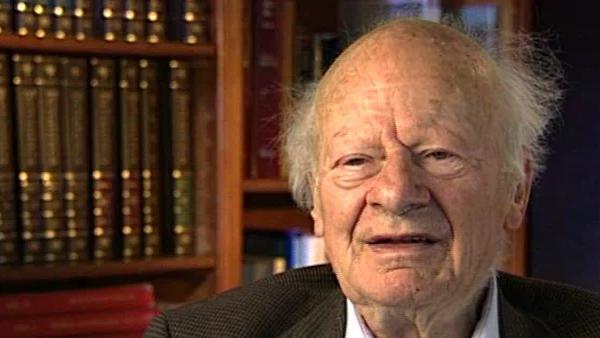NEXT STORY

Short range order vs long range order in the metal alloy
RELATED STORIES

NEXT STORY

Short range order vs long range order in the metal alloy
RELATED STORIES



Well my duties were very slight. I was to give two lectures a week for I think four weeks, may be it was six weeks, in which I explained the elements of quantum mechanics and occasionally after the war some people came to me and told me; 'I was a student in your quantum mechanics class in 1934 in Manchester and that was very good.' So that was nice. Then Bragg had made a theory together with Williams concerning the behavior of certain alloys, metal alloys. The prototype was an alloy of gold and aluminum, one aluminum and three gold, and this alloy, as you can find out by X-rays, has a very regular arrangement. It's a lattice, similar to the lattice of sodium chloride in which atoms of... of aluminum and atoms of gold alternate quite regularly, and one could follow the way this... this arranged itself as a function of temperature. At low temperature you had this regular arrangement, but if you heated that alloy to, let's say 500 degrees, then the atoms would become random.
And so Bragg and Williams have made a theory of that which was similar to the theory of Weiss of ferromagnetism; mainly they said there is an ordering field which takes hold at low temperature. So Bragg asked Peierls and me to do more about it, and I spent a lot of my time making this theory more theoretical, calculating the interaction of intervening atoms. And I found out that you could do this without invoking any general ordering field; just take the interaction of the atoms in pairs just like in ferromagnetism, and just like the Ising theory of ferromagnetism, and then it would turn out that at a certain temperature, the Curie Point, order would set in. And that's what the experiments actually showed.
The late German-American physicist Hans Bethe once described himself as the H-bomb's midwife. He left Nazi Germany in 1933, after which he helped develop the first atomic bomb, won the Nobel Prize in Physics in 1967 for his contribution to the theory of nuclear reactions, advocated tighter controls over nuclear weapons and campaigned vigorously for the peaceful use of nuclear energy.
Title: Lecturing at Manchester University and Bragg's metal alloys
Listeners: Sam Schweber
Silvan Sam Schweber is the Koret Professor of the History of Ideas and Professor of Physics at Brandeis University, and a Faculty Associate in the Department of the History of Science at Harvard University. He is the author of a history of the development of quantum electro mechanics, "QED and the men who made it", and has recently completed a biography of Hans Bethe and the history of nuclear weapons development, "In the Shadow of the Bomb: Oppenheimer, Bethe, and the Moral Responsibility of the Scientist" (Princeton University Press, 2000).
Tags: William Lawrence Bragg, EJ Williams, Rudi Peierls
Duration: 3 minutes, 31 seconds
Date story recorded: December 1996
Date story went live: 24 January 2008